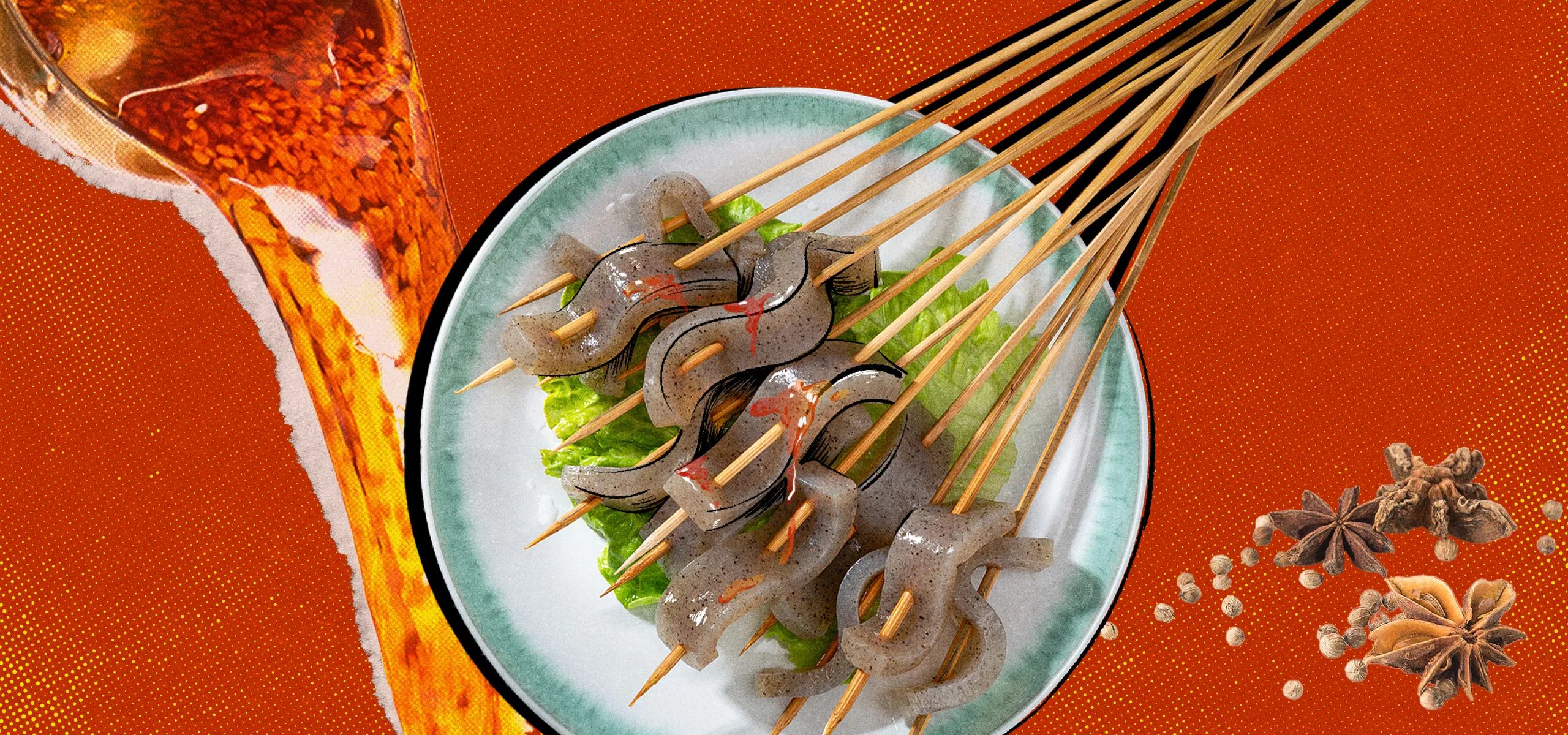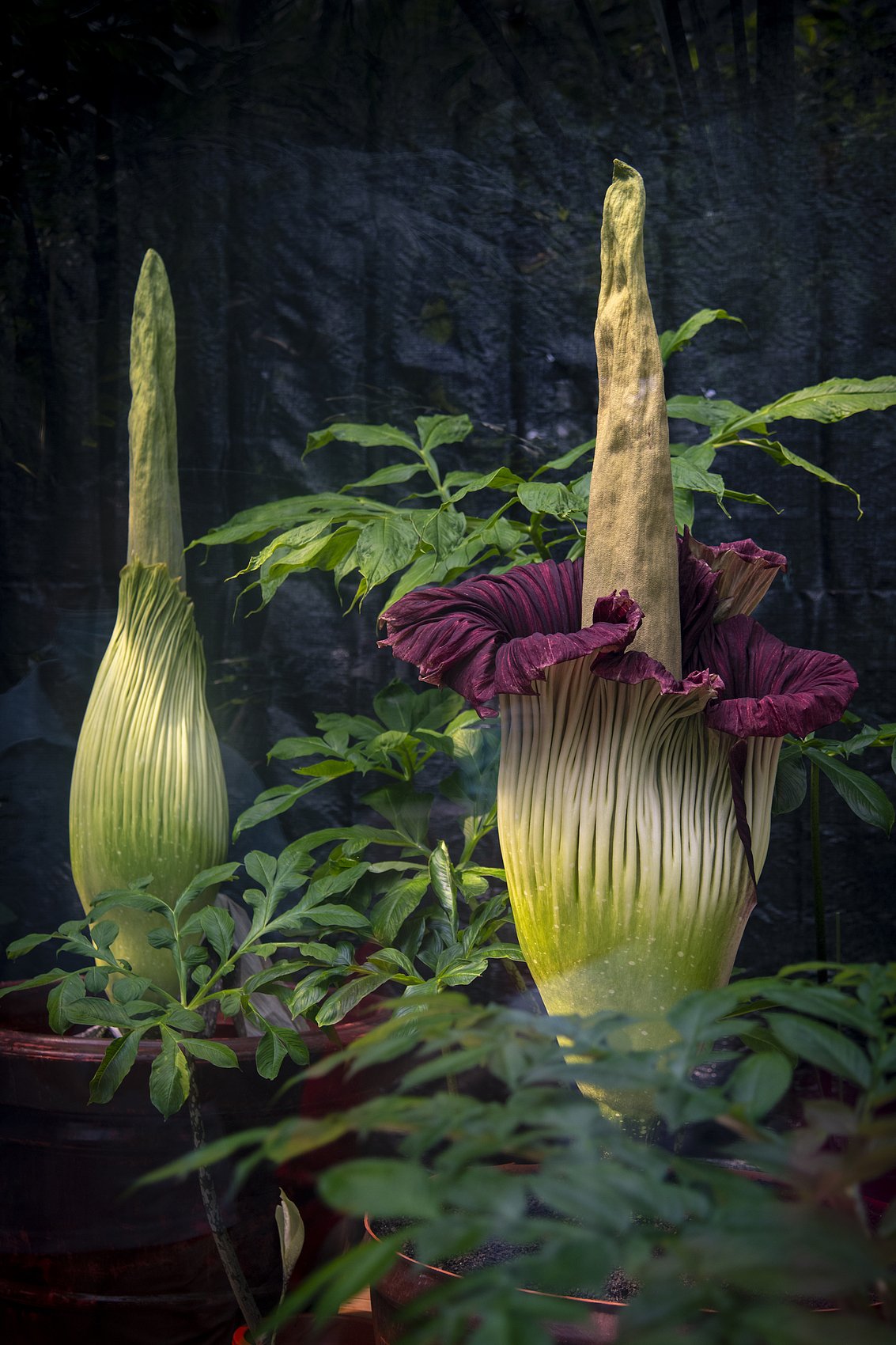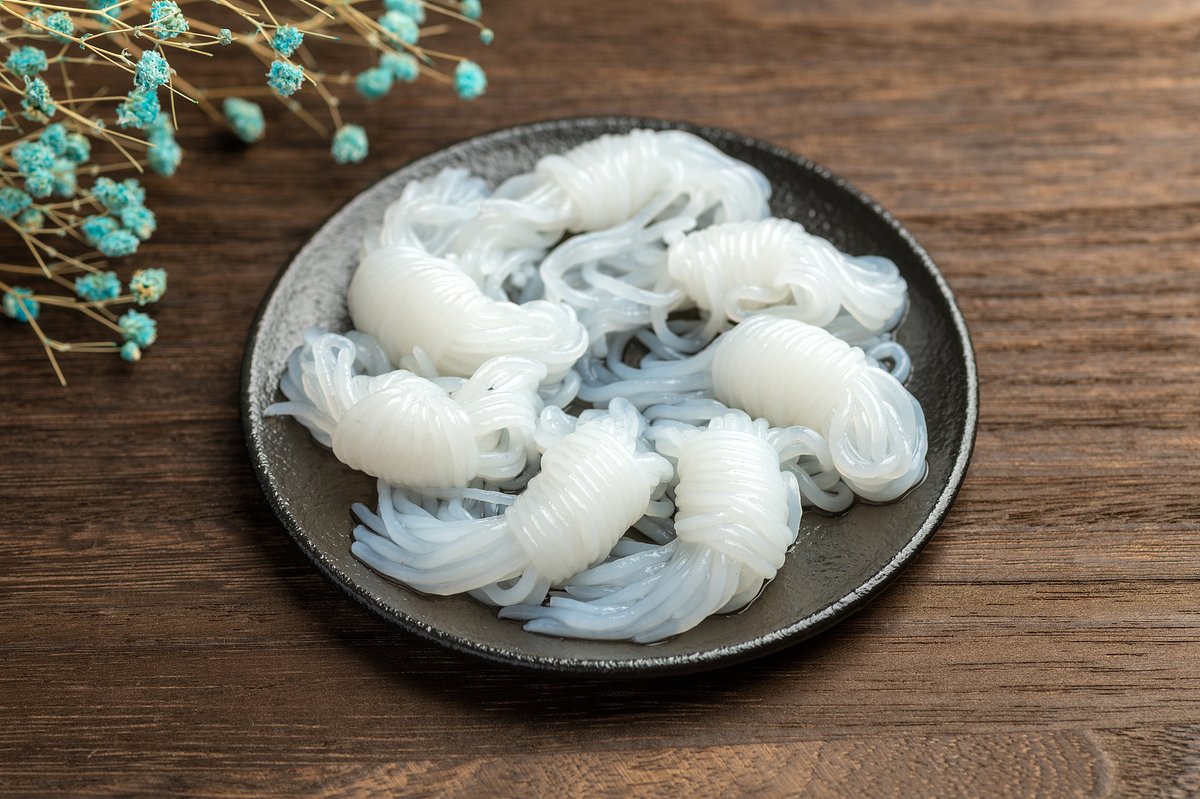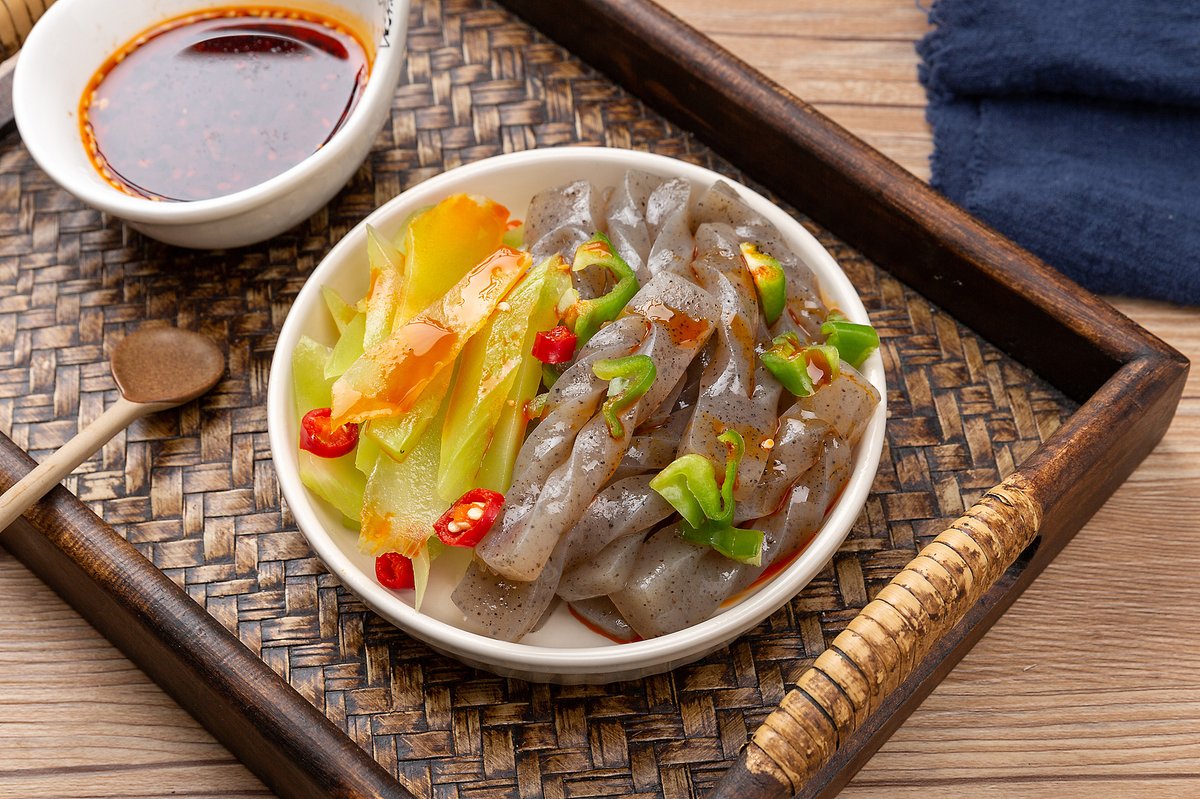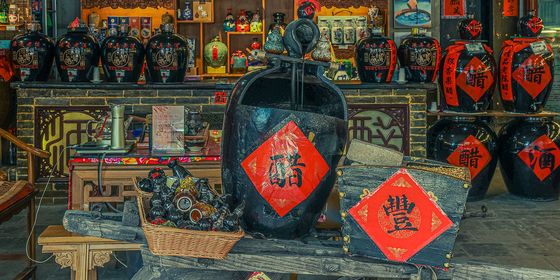A poisonous ancient plant, konjac has become the country’s favorite crunchy, stimulating snack—and a global sensation for its healthy yet addictive bite
What if I told you there is an ingredient that is mildly toxic, features almost no calorific content, and requires complex processing to be edible—yet has managed to captivate China? Believe it or not, such a food exists: konjac.
From tofu-like jelly cubes in hot pot to staple alternatives favored by fitness enthusiasts, konjac has become a true “crossover star” in the culinary world in recent years. Yet few realize that it’s not a modern sensation—konjac’s history as a foodstuff in China dates back over 2,000 years, evolving from a toxic plant to a weapon against famine and the base ingredient for some of the most popular snacks in the country today. So what exactly makes this gelatinous byproduct of the “devil’s tongue” plant so sought after?
Toxic beginnings
Konjac, or “魔芋 (móyù)” in Chinese, is a perennial plant in the family Araceae, native to China and Southeast Asia. Its raw form contains calcium oxalate, alkaloids, and other compounds that can cause numbness of the mouth, stomach pain, and nausea when consumed. So it is reasonable to assume that the character “魔” (mó, meaning “demon”) in its name carries a warning.
The earliest record of planting konjac can be traced back to the Western Jin dynasty (265—317). At that time, famous essayist Zuo Si (左思) mentioned the crop, then known as 蒟蒻 (jǔruò), in his work “Ode to the Capital of Shu (《蜀都赋》)”, writing: “In their gardens grow juruo and cornus fruit,” indicating that konjac was already being cultivated in the Sichuan region. Later, the Tang dynasty (618 – 907) scholar Liu Liang (刘良) annotated the text, explaining: “Ruo is a plant whose root, with some growing as big as a dou [an ancient cereal container of about 10 liters], has pure white flesh. It can be boiled with ash water to solidify, then eaten steeped in vinegar—a delicacy cherished by the people of Shu.” This brief note reveals that people in ancient times had already mastered the basic method of detoxifying and solidifying konjac using alkaline ash water—a process that remains essential to konjac preparation to this day.
Discover more China’s regional cuisines and culture:
- Where Red Pepper Meets Rosé: Yunnan and Guizhou Flavors Fuel China’s Bistro Craze
- Spice It Up: Why Hunan Cuisine Is Conquering China
- Stripped Down: The Story Behind China’s Favorite Snack
While konjac was rarely referred to as a “delicacy” in ancient texts, it did have some practical applications, such as being used as a meat substitute. Sun Guangxian (孙光宪) of the Five Dynasties (907 – 960) period recorded in his story collection Idle Talk from North Dreams (《北梦琐言》) how Tang official Cui Anqian (崔安潜), an avid Buddhist and vegetarian, had once served his guests “mock meats” made from wheat gluten and konjac, dyed to resemble pork shoulder, lamb, and other roasted animals parts—all strikingly realistic.
Later, in the Compendium of Materia Medica (《本草纲目》), Ming dynasty (1368 – 1644) physician Li Shizhen (李时珍) noted a recipe for preparing “konjac jelly”: “Shred it into fine strips, scald in boiling water, season with spices, and serve—its appearance will resemble that of jellyfish,” a precedent to modern versions of cold konjac dishes with dressings.
Konjac also has the benefit of being easy to grow and highly filling, making it an ideal food during famine, as outlined in the Book on Agriculture (《农书》) written by the Yuan dynasty (1206 – 1368) scholar Wang Zhen (王祯): “Among methods for surviving famine, the mountains offer benefits like kudzu, konjac, and acorns—these are truly beneficial to the people.”
Konjac’s medicinal uses have also been documented. Shen Kuo’s (沈括) Song dynasty (960 – 1279) Dream Pool Essays (《梦溪笔谈》) mentions its use in treating bee stings, while the Book on Lifespan and the Three Phases (《三元参赞延寿书》), a wellness guide from the 13th century, records: One person suffering from consumption (likely tuberculosis) happened to taste konjac prepared by a neighbor, found it delicious, ate more, and recovered. Several others with mumps were also cured after eating it.
The perfect snack?
Despite its prevalence throughout the ages, it wasn’t until recent decades that konjac began to appear in the everyday diets of Chinese people. During the 2000s, parallel to the rise of convenience store culture in the country’s cities, Japanese-style oden, a medley of tofus, fish cakes, root vegetables, and quail eggs simmered in a savory broth and served on sticks, gained widespread popularity. A favorite variety is “konjac knots” (delicate, gelled noodles tied into small bundles), enjoyed for their mild flavor and springy texture. This, in a way, marked a full-circle return of konjac, which was introduced to Japan from China via the Korean Peninsula 1,500 years ago, alongside the spread of Buddhism.
The public primarily knew konjac in the form of konjac tofu, a firm, gelatinous block that could be sliced or shredded and was commonly used in home cooking, stir-fried with vegetables, stewed in braises, or added to hot pots.
However, the widespread popularity of konjac among the younger generation is largely credited to the 2014 debut of the “Refreshing Konjac (魔芋爽, Móyù Shuǎng)” snack made from spicy, chewy strips of konjac root.
Before its advent, in 2009, several staff members from Wei Long, a company famous for producing the hugely popular southwestern snack 辣条 (làtiáo), or “spicy strips,” was having hot pot in Chengdu when they became intrigued by the konjac tofu in the pot. The konjac, infused with the aromatic and spicy broth, was smooth, delightfully chewy, and uniquely stimulating in texture, instantly sparking inspiration among the Wei Long staff. They soon decided to develop this hot pot ingredient into a ready-to-eat snack.
After five years of research, they developed a standard production method: first, they spun the konjac in a centrifuge—much like spinning clothes in a washing machine—to remove water and make it firmer. Then, using the traditional method of repeatedly freezing and steaming the konjac, they were able to create countless tiny holes, giving it a uniquely springy and crunchy texture. Finally, they cut it into slim strips and seasoned them with the classic numbing-and-spicy “mala” flavor. Thus, Refreshing Konjac was born.
Upon its launch, Refreshing Konjac proved a sensation. It successfully transformed a healthy, low-calorie ingredient into a stimulating, crunchy, and addictive snack, completely altering the traditional image of konjac. Alongside Wei Long’s signature spicy strips, it became a favorite among spice-loving consumers, earning it the playful nickname “human catnip.” Now, it is exported to over 30 countries and regions, including the United States, the United Kingdom, Japan, and South Korea. According to Wei Long’s financial report, in the first half of 2025, vegetable products, such as Refreshing Konjac, accounted for over 60 percent of the company’s total revenue, making them its primary source of income.
Following the success of the Refreshing Konjac, the market popularity of other konjac-based snacks soared. A report from Beijing Business Today this August noted that over 30 companies have entered the konjac snack market. For instance, Yanjin Shop, which specializes in snacks, introduced a dedicated spicy konjac product line in 2020. Seeing its potential, the company launched its “Big Devil” konjac mock-tripe snack in October 2023, with its sesame sauce variety achieving a monthly sales landmark of 100 million yuan in just 17 months.
Healthy aspirations
Beyond its role as a spicy snack, konjac has also rapidly gained popularity in the health and fitness market. The key lies in its main component: glucomannan, a soluble dietary fiber. Because the human digestive system lacks the enzymes to break it down, glucommannan passes through the intestines with minimal caloric intake. For comparison, 100 grams of konjac contains only about 5 to 10 calories, far less than the same amount of rice (approximately 130 calories) or bread (around 250 calories). Additionally, its ability to absorb water and expand provides a feeling of fullness, making it a favorite among dieters and fitness enthusiasts.
Various innovative konjac-based diet products have burst onto the scene in recent years. Instant konjac noodles have been marketed as healthier alternatives to traditional instant noodles. In provinces such as Shaanxi and Sichuan, konjac-based noodles have become popular low-calorie substitutes for local specialties, including red oil cold noodles and liangpi (cold, chewy wheat or rice-based noodles popular in northwestern China). The dessert sector has also embraced the trend, with new creations such as konjac mung bean cakes and konjac Swiss rolls designed to reduce calorie counts. Konjac jelly, marketed as “zero-fat, low-calorie,” has also gained traction. Even coffee chain Luckin has jumped on the bandwagon, marketing zero-fat konjac pearls in products such as its “Slacking Off Coconut Latte,” a play on the slang for “slacking off (摸鱼, mōyú),” a homonym of konjac in Chinese. By targeting the growing desire among many Chinese foodies to eat well without necessarily gaining weight, konjac is steadily expanding its market reach.
Konjac’s story is one of quiet ingenuity: a plant once considered toxic was turned into a delicacy, and today its mild, low-calorie charm is celebrated for wellness. All in all, it’s a tasty reminder of Chinese food culture’s knack for making the most of every ingredient.





